On November 29, NASA announced the postponement of the next extra-vehicular activity on the ISS. This is due to the discovery of a potentially dangerous fragment of space debris. Not having enough time to accurately assess the degree of threat, NASA just decided to postpone the spacewalks to avoid unnecessary risk for astronauts.
Unfortunately, this is not the first alarming news last month. Just two weeks earlier, the ISS crew had been woken up by an emergency message. Tracking systems recorded the appearance of an incomprehensible cloud of space debris that could intersect the station’s orbit. As a result, astronauts and cosmonauts had to put on spacesuits and move to their spaceship, ready to leave the orbital outpost in the event of a collision. While all these events unfolded, the ground control tried to determine the size of the cloud and figure out whether it posed a direct threat to the station.
It quickly became clear what had really happened. Russia tested the Nudol anti-satellite missile, which destroyed the old Soviet Cosmos-1408 spacecraft, causing a large number of wreckage. Fortunately, what happened in orbit has not yet led to a repetition of the script for the “Gravity” movie. However, the test left lots of questions, many of which left unanswered as for now.
A brief history of space weapons testing
The infographic below shows the statistics of anti-satellite weapons tests conducted by space powers between 1959 and 2021. Analysts estimate that at least 75 such tests have taken place during this time. 30 were performed by the United States, 34 — by the Soviet Union/Russia, 10 — by China, and 2 — by India.
However, dull numbers do not reflect all the specifics of these tests. Thus, the first tests of anti-satellite weapons were conducted by the United States in 1959. But we must understand that the technology of that era was not perfect, to put it mildly. The US military considered the only reliable means of destroying a spacecraft was to install a nuclear charge on an interceptor missile. Therefore, these tests were not about real orbital interceptions. The test was considered successful if the charge exploded at a distance of several kilometers from the target satellite, which was enough to destroy it.
But the Soviet Union chose a different approach, relying on satellite fighters. The essence of the concept was to launch a kamikaze device equipped with a charge of ordinary explosives. The device approached its target using a propulsion system, and then exploded, hitting it with shrapnel.
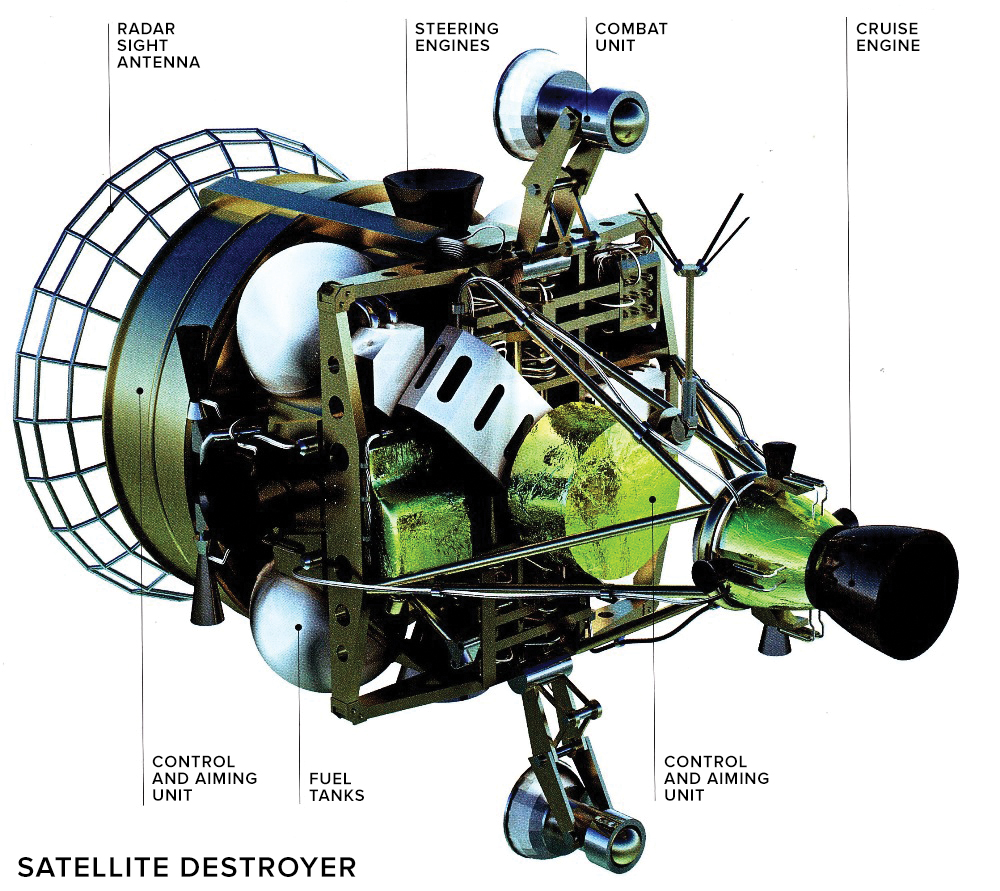
The first tests of the Satellite Fighter took place in 1968. A total of eight tests are known which have resulted in the destruction of targets in orbit. Despite the fact that the last of these tests was conducted 39 years ago, their “legacy” still lingers in orbit — more than three hundred fragments.
As for the Americans, with the improvement of technology, they have changed the paradigm. Nuclear interceptors have been replaced by systems designed to destroy satellites by direct hit. Thus the rocket ASM-135 was born. It was planned to be installed on F-15 fighters. In 1985, the United States performed combat testing of this system. The SolwindP78-1 satellite fell victim to it.
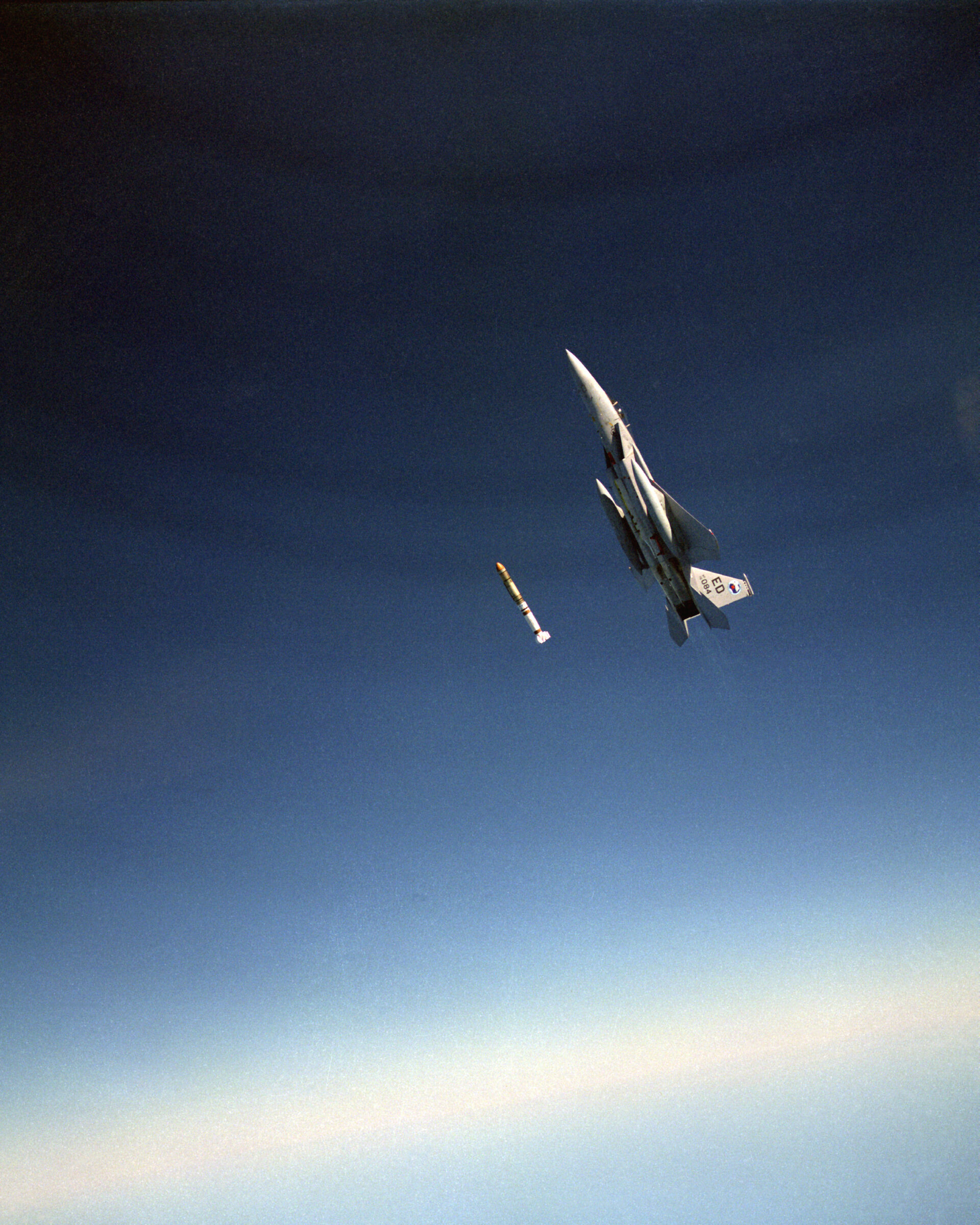
The Pentagon considered other options as well. The following year, 1986, the United States performed a very unusual test, during which an experimental interceptor satellite equipped with an autonomous radar system and guidance system rammed the top stage of a Delta II missile (which is ironic, since missiles usually destroy satellites, and not vice versa). About 300 fragments were formed during these two tests. In the following years, they all went out of orbit and burned in the atmosphere.
The race to develop anti-missile weapons has raged again in the 21st century — and its intensity even exceeds that of Cold War era. So, after a series of blank tests, in 2007 China conducted a notorious test of its anti-satellite missile, shooting down the meteorological satellite FY-1C. The destruction of the spacecraft led to the formation of more than three thousand fragments, increasing then existing pool of space debris by a quarter. The problem was exacerbated by the fact that FY-1 was in a high 865-kilometer orbit. Therefore, even after almost 15 years, most of its fragments still remain in space.
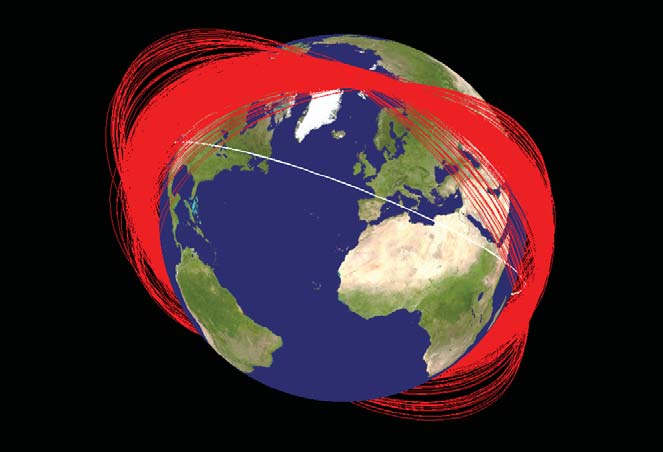
Compared to the Chinese test, the American test of 2008 and the Indian test of 2019 seemed just a trifle. The spacecraft destroyed were in low orbits, and most of their wreckage quickly burned in the atmosphere. This gave hope that the great space powers would at least realize the seriousness of the threat posed by space debris — and even in the case of new anti-satellite weapons tests they will try their best to minimize the consequences. And then the Russian test took place…
Space-1408
Before talking about the test itself, it is worth saying a few words about its target. On September 16, 1982, the Cyclone-3 rocket launched a satellite with a perigee of 645 km and an apogee of 680 km, which received the vague designation Space-1408. In fact, this name just disguised a device of the Celina-D series, built by the Yuzhnoye design office. It was intended for radio reconnaissance.
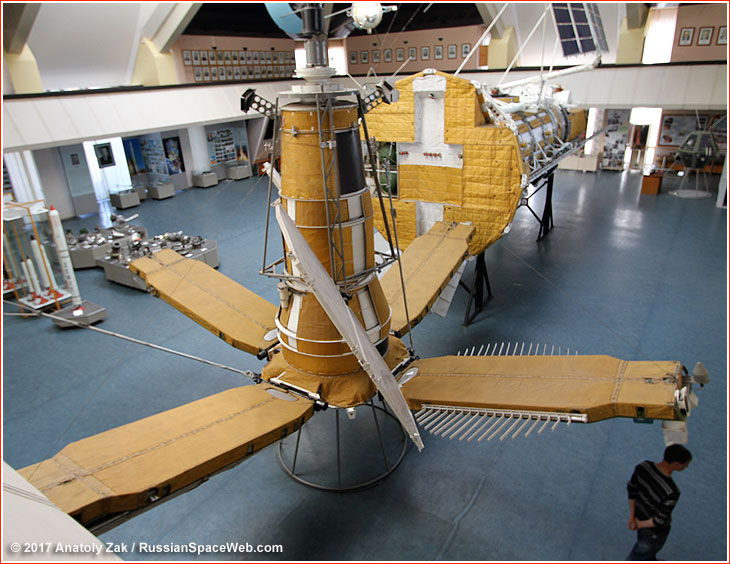
It is no secret that Soviet intelligence devices had a relatively short lifespan compared to their Western counterparts. This was offset by their impressive numbers. A total of 132 satellites of the Celina series were launched into space during the Soviet era.
Cosmos-1408 was one of such serial devices. It had been operating for six months as designed, after which it was decommissioned. The 1750-kilogram satellite was not sunk in the ocean, so it continued to fly peacefully around the Earth, surviving the collapse of the Soviet Union. Under the influence of the Earth’s atmosphere, the orbit of Space-1408 gradually decreased. By November 2021, the height of its perigee was 465 km, the apogee — 490 km. If not for the test, most likely, Cosmos-1408 would last in orbit until the end of current decade.
The destruction of Space-1408 and its consequences
It is known that when the media began to ask space experts to comment on the results of the tests, many of them refused to believe that the Russian military did destroy the satellite. And it is not because Russia did not have the technical capabilities to perform such an operation (they definitely did). It is a matter of the orbit in which the Space-1408 was located, and the consequences of its destruction.

As a result of blowing up the satellite, a cloud of almost 1,700 trackable fragments was formed, located at altitudes from 440 km to 520 km. And the quantity of much smaller fragments is even more (at least two orders of magnitude more). The fact that they are not visible does not prevent them from causing significant damage in the event of a collision. And all this cluster is situated at the most populated heights: exactly where lots of the existing spacecraft fly.
The near future also does not promise anything good. Due to braking against the upper atmosphere, the fragments of Cosmos-1408 will descend slowly and in a couple of years their trajectory will gradually begin to intersect the orbit of the ISS (410-420 km). Yes, the station can dodge large debris, but even the smaller fragments not detectable by radar are quite enough to break through its hull. It is currently difficult to provide any specific figures as for the probability of such a collision. But in any case, it is clear that the test has significantly increased the risks for space explorers in the coming years.
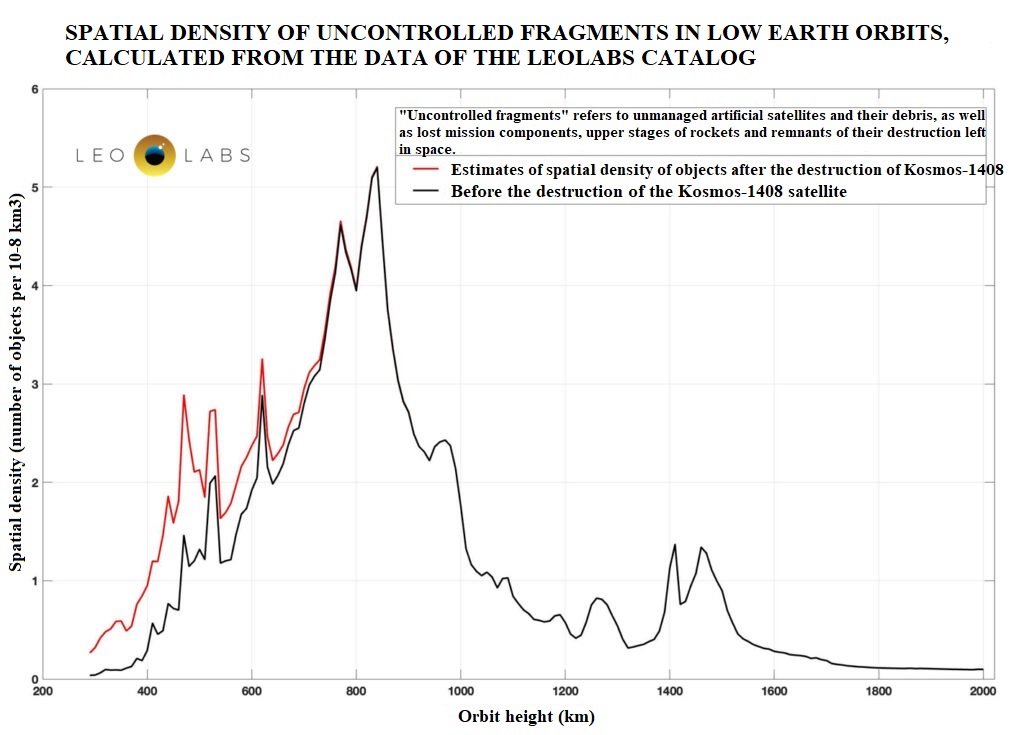
Therefore, it is not surprising that the experts refused to believe in the reality of what happened. After all, it looks as if Russia shot itself in the leg, threatening its own modules and astronauts.
It cannot be said that the test came all of a sudden. In recent years, the Russian military has performed a series of tests of the Nudol missile. And in December 2020, the US Space Command urged Russia to think twice, saying: “If these weapons are tested on a real satellite, it will create a large cluster of debris that could threaten commercial satellites and permanently pollute outer space”. As we see, these words became prophetic.
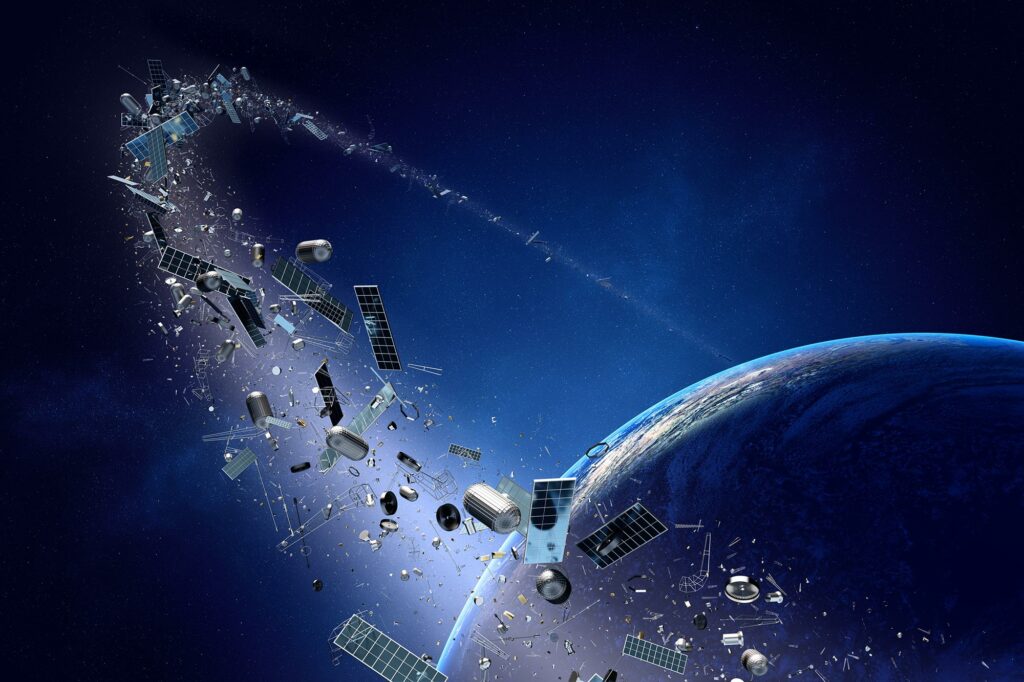
After the test, many different versions have appeared in the information space, trying to explain the reasons for performing it. Some believe that the Russian authorities have simply decided to stretch their muscles in public in order to raise their rating. Some say it is a direct warning to the United States or even revenge for recent statements by high-ranking US officials about preparations for Russian invasion of Ukraine. Someone said it was all because of mere human stupidity, and the military conducted the test without even realizing its consequences. And some still believe that this is a mistake, and the rocket just accidentally hit the satellite.
But whatever the answer, the current situation is reminiscent of Richard Feyman’s famous statement during the investigation into the Challenger crash: “For a successful technology, reality must take precedence over public relations, for Nature cannot be fooled “.
Russian officials can say whatever flaunting the presumed surgical precision of the operation, and claiming that its wreckage does not threaten anyone and that words of danger are only Western propaganda. The problem is that beautiful words cannot override the laws of orbital mechanics. At the same time, if you lie to everyone else for a long time, then sooner or later you start believing your own lies. In the end, if they say it is absolutely safe to blow up satellites in orbit, it can always be repeated to keep potential enemies alerted. As for other geopolitical players who are also claiming the status of new great powers and developing similar weapons, why should they restrain themselves if other countries do not?
And if such reckless tests in orbit continue, sooner or later we may find ourselves in a situation called Kessler syndrome. This is when the amount of space junk increases so much that it begins to collide with other satellites, which in turn lead to the formation of new debris and cause a chain reaction of destruction. The result may be that humanity will lose the ability to launch anything into space for a long time.
